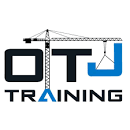This vehicle loading crane (VLC) course is designed to ensure that participants have the skills and knowledge required to operate a vehicle loading crane with a capacity of 10 metre tonnes or more

This vehicle loading crane (VLC) course is designed to ensure that participants have the skills and knowledge required to operate a vehicle loading crane with a capacity of 10 metre tonnes or more.
Mounted on a vehicle for the principle purpose of loading and unloading such a vehicle, including the application of load estimation and slinging techniques to move a load, for licensing purposes.
VLC’s are also known as truck cranes (or crane trucks), truck mounted cranes or Hiab crane truck, a popular manufacturer of VLC’s.
Why Train With Us?
With 8 cranes on a site including a brand new UNIC truck crane mounted on a Hino prime mover and expert crane operators as your trainers, we know a thing or 2 about cranes. Located at Stapylton, halfway between Brisbane and the Gold Coast off the M1, Yatala North exit.
Truck Crane Course Overview
This course requires the operator to plan the work, conduct routine checks, set up crane, transfer loads, mobile loads and shut down and secure the crane.
Competence in this unit, does not in itself result in a High-Risk Work Licence to operate this plant. A student must successfully complete the National Assessment Instrument (NAI)(which is the mandated assessment for the HRWL to operate the relevant licencing class as detailed in this unit) and be issued with an AS1.
Vehicle Loading Crane Ticket Application
This unit specifies the skills and knowledge required to safely operate a vehicle loading crane with a Maximum Rated Capacity (MRC) of 10 metre tonnes or more. Competence in this unit, does not in itself result in a High-Risk Work Licence (HRWL) to operate this plant.
Vehicle loading crane means a crane mounted on a vehicle for loading and unloading the vehicle.
A person undertaking this unit must hold:
A current National HRWL to perform dogging or a current certification for a specific VET course for HRWL to perform dogging that has been issued by, or on behalf of a WHS Regulator.
A person performing this work is required to hold a vehicle loading crane HRWL.
Performance Criteria
Conduct routine checks
Set up crane
Transfer loads
Shut down and secure crane
Vehicle Loading Crane Course Outline
Operate a vehicle loading crane
Use of lifting equipment and basic slinging techniques suitable for the loads to be loaded/unloaded as defined by workplace procedures
Apply risk assessment and hazard control strategies
Use and interpret crane manufacturer's specifications and data
Verify problems and equipment faults and demonstrate appropriate response procedures
Appropriate mathematical procedures for estimation of loads
Assessment of ground conditions
Awareness of the boom/jib movements
WHS legislation, standards and codes of practice
Use of lifting equipment and basic slinging techniques suitable for the loads to be loaded/unloaded as defined by workplace procedures
Understanding of the hierarchy of hazard identification and control
Organisational and workplace standards, requirements, policies and procedures
Procedures for the recording, reporting and maintenance of workplace records and information
Typical routine problems encountered in the process and with equipment and adjustments required for correction
Crane characteristics and capabilities
Licensing/ Regulatory Information
Legislative and regulatory requirements are applicable to this unit of competency.
This unit is based on the licensing requirements of Part 4.5 of the Model Work Health and Safety (WHS) Regulations and meets Commonwealth, State and Territory HRWL requirements.
The National Assessment Instrument (NAI) is the mandated assessment for the HRWL to operate the relevant licencing class as detailed in this unit.
Pre-requisite For This Truck Crane Course
Provide 100 Points of identification (as per Workplace Health and Safety Queensland requirements)
Ability to read, write & understand English
What to Bring
Provide 100 Points of identification (as per Workplace Health and Safety Queensland requirements)
Steel cap Boots
Safety gloves
Hi-Visibility shirt and hard hat with a brim
Suitable outdoor work clothing (no singlets)
Lunch and water bottle
If applicable, any evidence of prior experience e.g old certificates
USI Number
Additional Course Information
Course Timing:Course days typically run from 6:30am to approximately 3:00pm - Participants are advised to arrive 15 minutes early to sign in.
*You may be required to start before 7:00am and stay after 3:30pm depending on how long the formal assessment runs for, we will advise of these times on the day of formal assessment.
Course Structure:
Please note: Competence in a unit does not in itself result in a licence.
Once the trainer believes the participant has demonstrated theoretical and practical understanding of the chosen course (i.e ‘Unit of Competency’), this will be verified with a certificate or what’s known as a ‘Statement of Attainment’ from us, On the Job Training.
They then begin the process of obtaining a licence, via the relevant practical and theoretical assessments or ‘National Assessment Instruments’ (NAI).
This is conducted by an assessor on behalf of Workplace Health & Safety Queensland. On successful completion of the mandated assessment, they will be issued with a ‘Candidate Assessment Summary’ (CAS) by On the Job Training.
Upon successful completion of the NAI as stated above, the Office of Industrial Relations Queensland will contact them with instructions on how to apply for the high risk work licence.
High Risk Work Licence Training Centre
We specialise in high risk work licenced and accredited training, with our training yard at Stapylton where the Gold Coast meets Brisbane near the M1. CSQ funding provider.
Courses include: Mobile & Tower Crane Operating | Dogging & Rigging | Scaffolding | Excavator, Skid Steer, Roller | EWP, Hoist, Forklift, Telehandler | Confined Space, Working at Heights & More
© 2025 coursetakers.com All Rights Reserved. Terms and Conditions of use | Privacy Policy